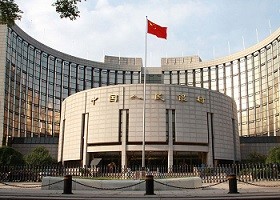China's central bank clarified on Monday that their recent move to cut interest rates and reserve requirement ratio (RRR) are "reasonable and necessary," not an attempt at quantitative easing.
The People's Bank of China (PBOC) said on Monday that in trimming down the rates, they have considered the country's commodity price and liquidity changes, noting that "it is different from the quantitative easing (QE) policies adopted in other countries."
An official statement released on Monday also emphasized that the cuts were "conventional and normal monetary policy measures."
The PBOC noted that China has not yet reached the zero-interest-rate restriction, adding that the nominal interest rate is still above the said threshold and the reserve ratio is till high. Hence, the country still has no reason to expand its balance sheet or indirectly "print money."
The central bank remarked that countries who use quantitative easing have expanded their balance sheet, one means is by buying assets such as bonds.
For Wang Tao, chief China economist with UBS, "the central bank's clarification can help to avoid its latest policy being misread as quantitative easing."
Wang also said that the recent cuts by the PBC cannot be compared with the Western nation's "quantitative easing."
PBOC officials also said that the interest rate liberalization is part of China's core financial sector reform.
Wang said that they are even expecting the central bank to "cut rates one more time this year, likely in December, and again in early 2016."
"We expect another 50-100 basis point RRR cut by end 2015, and about 300 basis point cut by end 2016," Wang added.




























